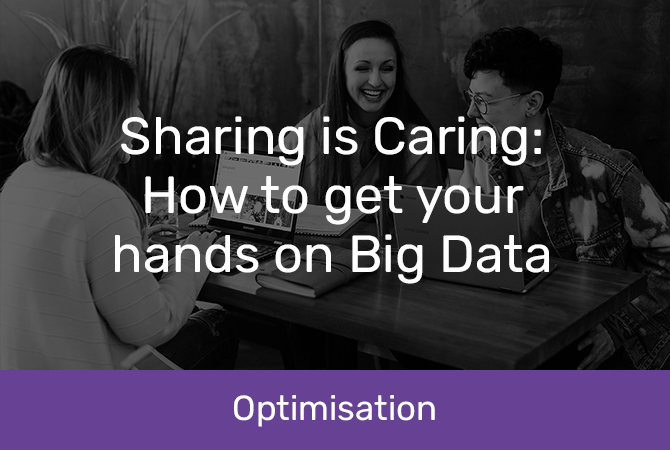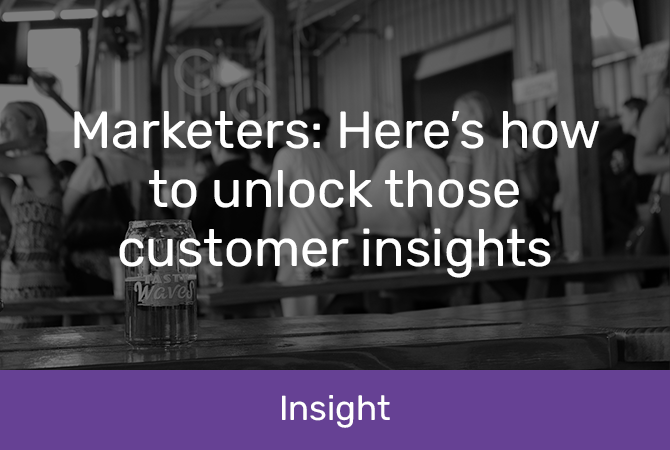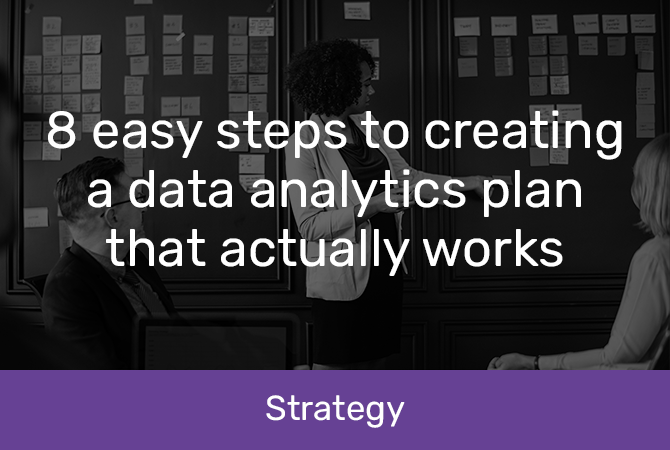
Striking Gold: What can data mining really do for marketing?
Hint: the answer is 'a lot'.
A CEO client of ours recently gave one of those off-the-cuff remarks that sticks in your head with the resonance of something profound — “Marketing can no longer afford to be the colouring-in department.” Of course, he’s right — marketing and advertising have too long been associated with the whimsy of creative flow and the colourful dramas of ad agencies. What he thought he needed, he said, was “more data in the marketing mix” but he wasn’t exactly sure why. Welcome to the world of data mining and predictive analytics.
What exactly is data mining?
In a sentence, data mining (often referred to as data analytics) uses techniques such as advanced statistics, data science, database theory and machine learning to uncover patterns in large data sets – patterns that can deliver marketers a data-driven competitive advantage when correctly aligned with business objectives.
Is your head spinning? Let’s simplify things with a couple of examples.
Consider a typical customer and the list of things you know about them. Included in that list would almost certainly be their name, contact details, age, transaction history and preferred communications channel. Beyond that, a more complete list might also include their dependents, their profession, their marital status, their income and perhaps whether or not they have a mortgage. This is your customer ‘data’, and if you’re not already using it to drive your marketing decisions, you probably soon will be.
Why? Because even this very rudimentary information, in the hands of an experienced data miner, can deliver a veritable goldmine of customer insights you can use to drive your marketing strategy. For example, analysis might reveal a cluster of customers living in a specific area code who had made a high-value purchase from your company. One marketing conclusion to be drawn could therefore be that the potential exists to offer the same high-value product to other customers living in the same neighborhood.
Or your data might show a significant number of customers buying product X or Y when a child turns five. Applying that information to your entire customer base could result in a product communication sent at just the right time to affect a buying decision. This is data-driven marketing — where simple data-sets like the ones mentioned above are an infinitely malleable resource with the capacity to deliver customer insights that are limited only by your imagination.
Here are a few to get you started. Through applying data analytics to your customer or transactional data you can do things like:
- Estimate the potential size of a market
- Model the impact of changes to a product strategy
- Understand customer and product profitability
- Optimise the effectiveness of marketing, sales, retail and contact centre channels
- Drive operational efficiencies
So where to start?
As with most things, you’ll have to walk before you can run, but time and again experience has shown that a customer ‘Knowledge Discovery’ using existing data is one quick way to impact your bottom line. Click here to get a ballpark estimate of how much a data mining project would cost, or continue on to read a Knowledge Discovery case study:
 Challenge
Challenge
A large insurance company with a policy offering that included Life, Health, Auto and Home products wanted to better understand the cross-over relationship between its different customer bases. As with many firms in the sector, the relevant customer data was buried in a host of different silos and a single customer view wasn’t available. The data was also not particularly rich from a marketer’s perspective and was oriented towards internal business processes as opposed to use in marketing scenarios.
 Solution
Solution
After an initial assessment, Datamine was able to integrate the disparate data silos and deliver a single customer view from which the company was able to run a number of different analytics projects. Among those was a customer segmentation exercise – critical for improving the effectiveness of marketing budgets.
 Result
Result
Even though the customer data that had been collected was regarded as rudimentary, Datamine’s reports identified clear customer segments and both their current and potential value, as well as the likely effect of geographic and demographic variables on upcoming campaigns. With its profitable and potentially profitable customers identified, the company was able to roll out marketing strategies targeting the right offer, to the right people, at the right time, significantly improving the effectiveness of its above and below the line marketing.
The bottom line
As companies face questions about their customers and marketing strategies, the inclination to turn to gut instinct or industry experience for answers is waning as the true value inherent in existing customer data is better understood. The short truth is that marketers who embrace evidence-based decision making are virtually guaranteed a competitive advantage. We believe huge opportunities are waiting for those who are ready to jump into the data pool, and once they get started they’ll never want to stop.
 ABOUT THE AUTHOR
ABOUT THE AUTHOR
Sally Carey is a former director of Datamine with over 20 years experience consulting on data analytics solutions across a range of industries. Before retiring, Sally specialised in delivering clarity from the complexity of big data – advising organisations on a host of predictive analytics disciplines, including decision-making, loyalty programmes, organisational change and marketing strategy.


















.jpg)







-1.jpg)








































